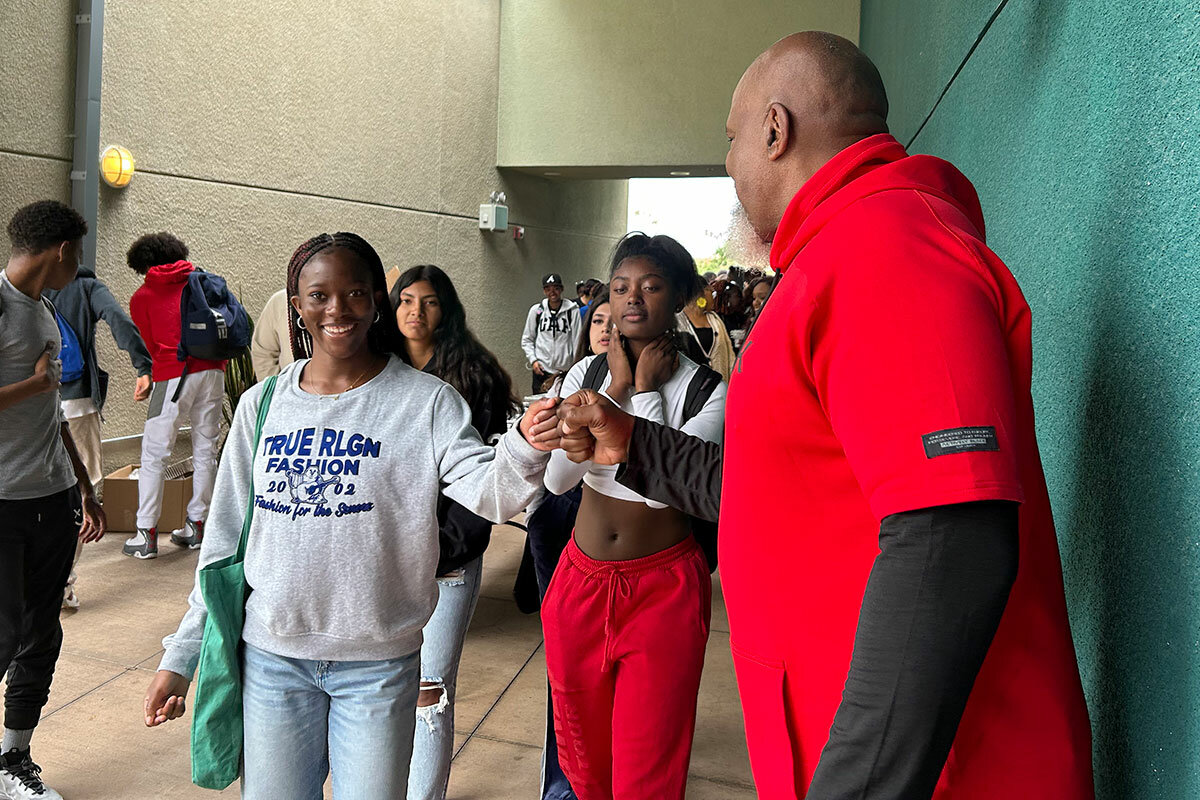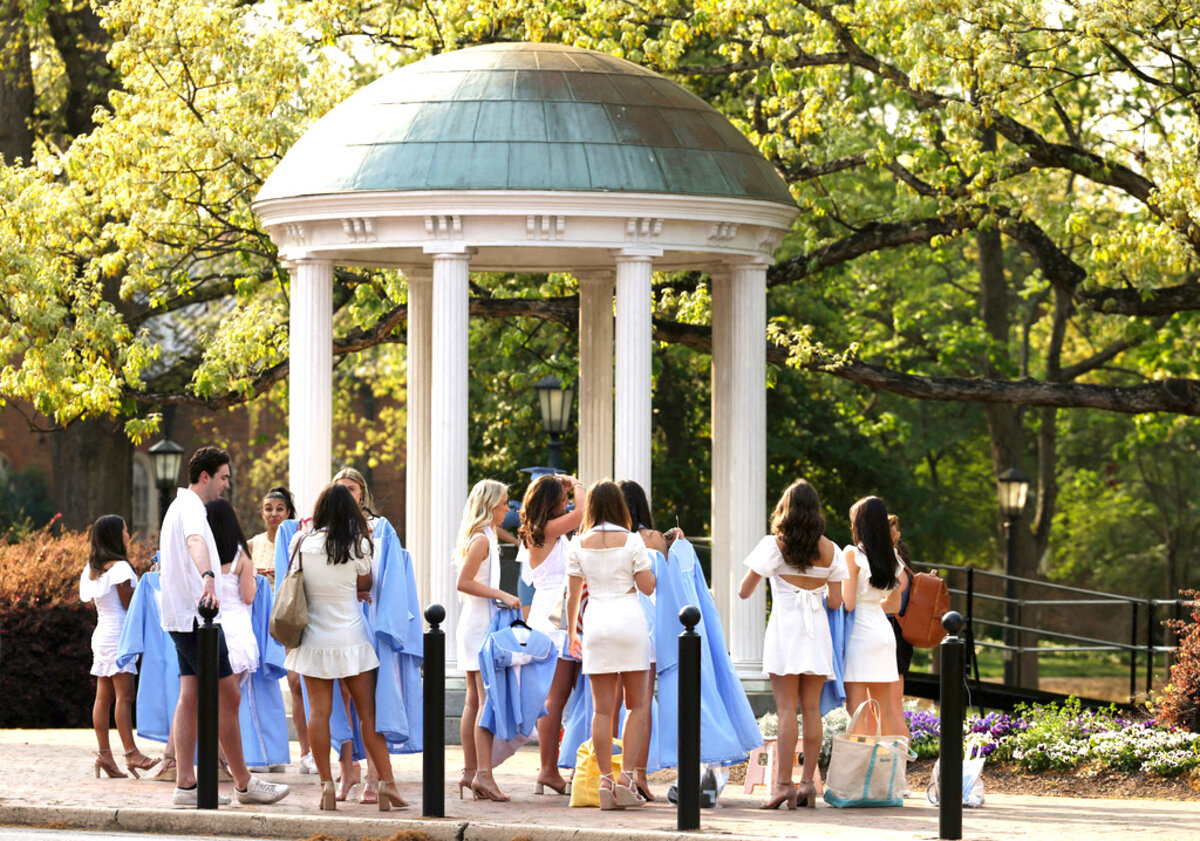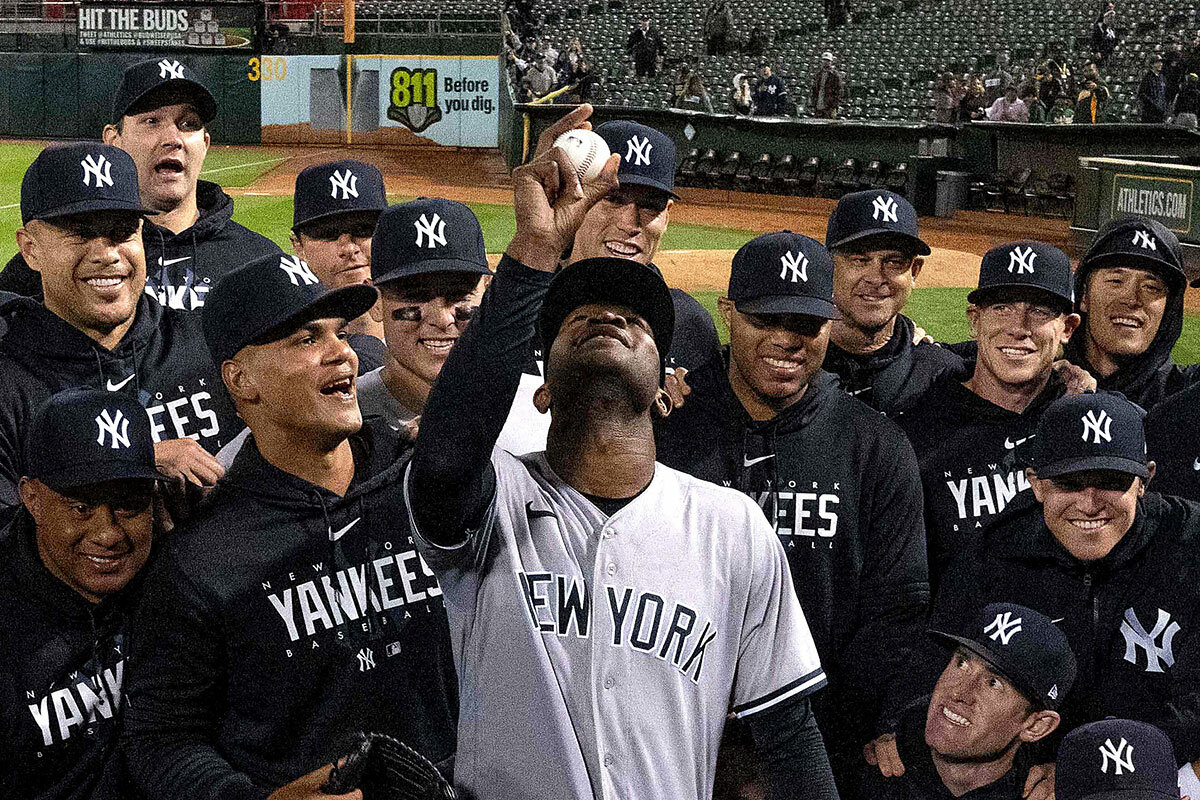What comes after affirmative action for college? Universities in states like California and Michigan, where race-based admissions had already been banned, may hold answers.
Monitor Daily Podcast
- Follow us:
- Apple Podcasts
- Spotify
- RSS Feed
- Download
 Howard LaFranchi
Howard LaFranchi
The mass of people moving through the main hall of the Kyiv book fair confirmed the rumor: Ukrainian President Volodymyr Zelenskyy would make an appearance.
I have to admit, I was as caught up as anyone as the universally recognizable leader in his signature T-shirt (this day not military green, but black) pressed through the crowd. My journalist instincts kicked in, and I jostled other gawking onlookers until I got as close as presidential spokesperson Serhii Nykyforov. No, he said, the president would not be taking any questions.
After stopping in the fair’s section on “Russia’s invasion of Ukraine” and chatting briefly with event organizers, Mr. Zelenskyy was gone.
Held annually in Kyiv’s historic arsenal, the book fair was canceled last June, with Russia’s full-scale invasion still too fresh. But buoyed by the resilience and resolve of Ukrainians – and the clamoring for the return of a beloved cultural event – organizers knew the fair had to return.
Yet with a difference. The overall theme of “When everything matters” focused on how wartime has made sometimes abstract values real, as well as the interplay between war and democracy.
“What is democracy, how do we experience freedom, what do we mean by inclusivity or the unity of the country, and are these values really worth fighting and dying for?” Nataliya Gumenyuk, the book fair’s events curator, asked when we met.
As a panel of volunteer soldiers and journalists assembled for a discussion of democratic values in wartime, Ms. Gumenyuk explained the power of the theme.
“Suddenly all of these theoretical concepts have become real to people, they mean something more and different,” she said.
“With missiles striking randomly, the simple ‘Have a good night’ becomes something urgent,” she added. “Just walking out of a bomb shelter alive gives freedom new meaning.”










